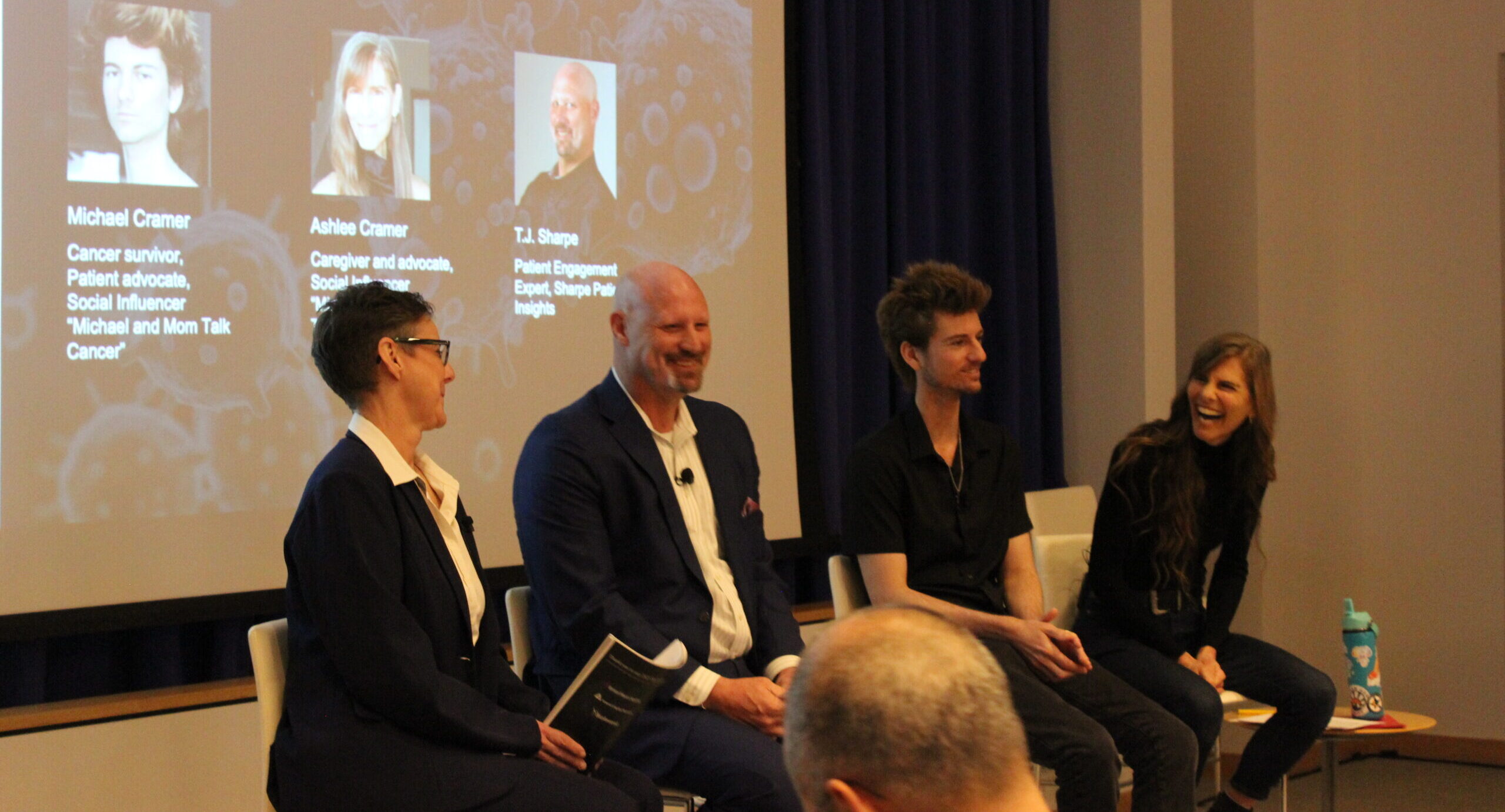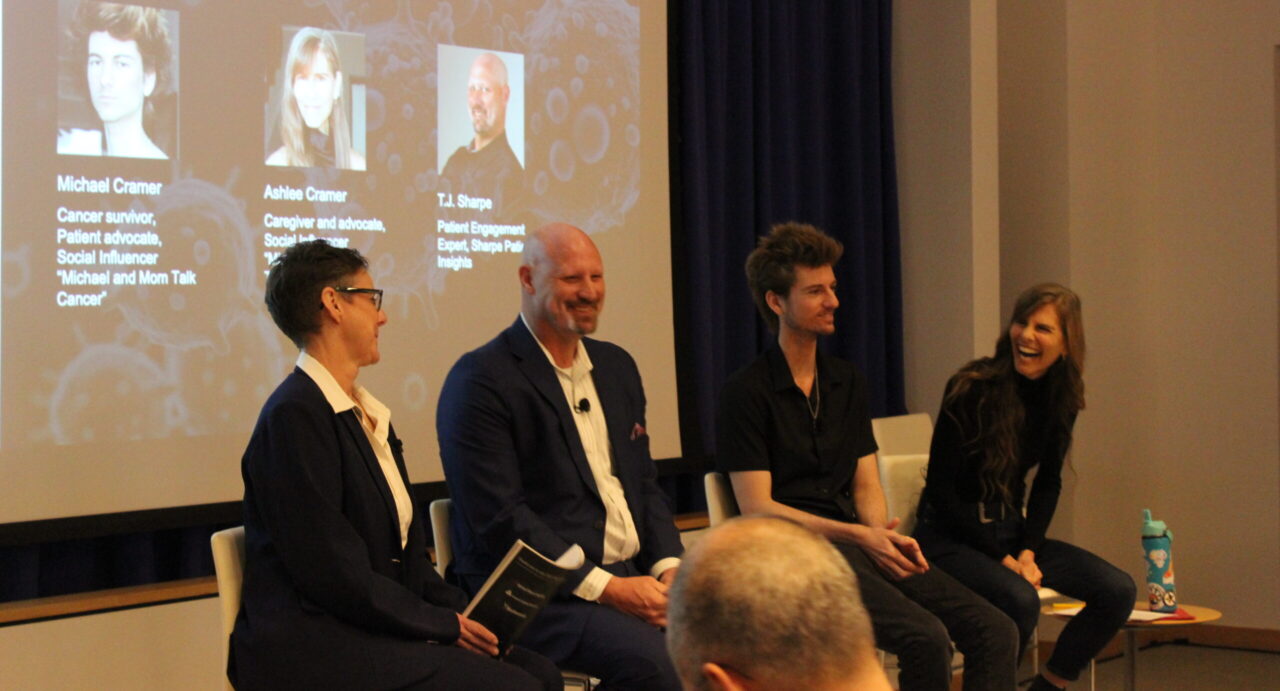As cancer treatments evolve, so do the needs and expectations of people living with cancer. Here, we share the first of three pieces of an important discussion with patient advocates Michael Cramer, Ashlee Cramer, and T.J. Sharpe.
This Q&A is an excerpt of the ‘Patient Voices: Shaping the Future of Cancer Care’ panel at the Lumanity-hosted Cancer Progress 2025 conference. The session was moderated by Angela Wheeler, President, Insight USA & Patient CoE Lead, Lumanity, and featured Michael, Ashlee, and T.J. sharing their experiences of living with cancer and navigating the US healthcare system to receive treatment.
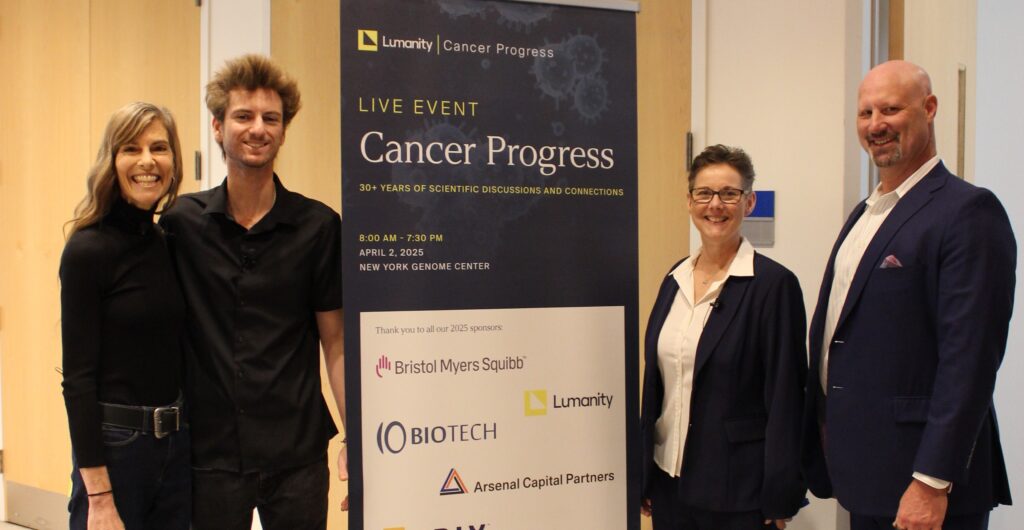
Meet the panelists:

Michael Cramer
Cancer survivor, Patient advocate for cancer and GvHD, Social Influencer
Keen windsurfer and athlete. Diagnosed with hepatosplenic T-cell lymphoma at 19, underwent a bone marrow transplant in 2020 and since diagnosed with severe chronic graft-versus-host disease.
Listen to Michael introduce himself:

Ashlee Cramer
Caregiver and advocate for cancer and GvHD, Social Influencer
Former Broadway dancer and early-years educator, now caregiver and dedicated advocate.
Listen to Ashlee introduce herself:
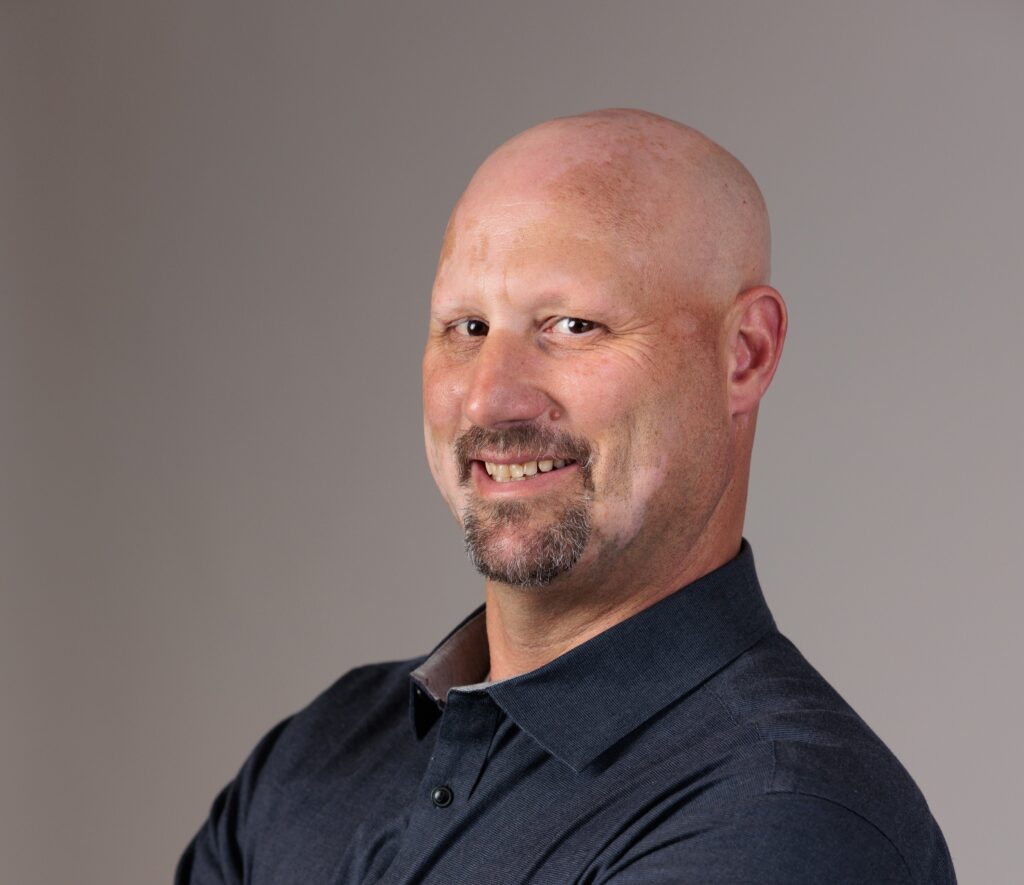
T.J. Sharpe
Patient Engagement Expert, Sharpe Patient Insights
Two-time cancer survivor, cancer-free following Merck’s Keynote 2 trial, now patient advocate. Worked with Transcelerate, Merck, GSK and other pharma companies to magnify patient voices.
Listen to T.J. introduce himself:
What were some of the factors that had the greatest impact on your decisions either to try a treatment or not do it?
Michael Cramer: For me, the first thing I think about is side effects. I’ve been through chemo, radiation, multiple immunotherapies and, worst of all, steroids – that’s been the treatment I’ve hated the most. I’ve been on a lot. The steroids have caused necrosis in my knees and elbows, and caused a lot of other health issues that I still live with.
The first thing I think about is, “is this treatment going to be worth doing for the long term?” Is it worth going through a treatment now, and suffering now, so that in the long-term I have a higher survival rate? When I was taking steroids, I was extremely depressed and had no quality of life. So now I think about the impact on my quality of life, whether it’s something I want to do, and whether the treatment will actually work. It’s a lot to go through any of these treatments.
Ashlee Cramer: I’ve had two totally different experiences when choosing treatments. When my husband was diagnosed with cancer following a biopsy, we hadn’t even left the hospital yet when we received the news. When the surgeon walked in, the very first thing he did was read off the risks of receiving an Ommaya reservoir. So while we were still reeling from the diagnosis, we had to immediately take in the possible risk of surgery next to his brain to start chemotherapy into his spinal fluid. It was terrifying.
I started to ask questions, like “is this necessary?”, but the surgeon immediately cut me off – “I don’t have time. I have another patient. If you want to ask questions, find another surgeon.” And he left. I’m sure he’s a good person, and sure he was in a hurry. I believe people are good. But it shut me up – I didn’t dare ask more questions, not wanting to risk my husband’s treatment. I called my husband’s PCP [primary care physician] after crying, to tell him the surgeon will not do the surgery. The PCP called and begged the surgeon to do the surgery. But after that, I didn’t think about the risks anymore. I didn’t think about insurance. I didn’t think about quality of life. I wanted my husband to live.
I learned a lot from that experience, from my husband’s treatment, and his passing. When Michael was diagnosed, we weighed the benefits versus risks of his treatment options. Michael had a knee replacement a year ago – the risks were high, he’s still immunosuppressed, and it was going to take a long time to heal, but by having the knee replacement, he might still have the option to surf again, to do more of the things he’d want to do as a 23 year old.
I didn’t know I could advocate. Now I do and that has definitely changed our lives.
T.J. Sharpe: When you consider the decision going into a treatment or trial, the biggest question you have as a patient is “will this work for me?” We do a lot in the pharma industry to come up with numbers. I Googled it when I got stage IV melanoma – “it has an 18-month median lifespan and a 8% 5-year survival rate. Those are all scary-sounding numbers, but what does that mean for me? What is my body going to respond to?”
When I got on my first trial, it was at Moffitt Cancer Center with a great researcher, Jeff Weber. Internet discussion boards for melanoma patients talked about how he cherry picks his patients, which made me say, “well that’s pretty good if he picks me, right?”
Undergoing a trial for a tumor-infiltrating lymphocyte (TIL) therapy and feeling like I was taking a personalized medicine made me feel more hopeful – that even though it didn’t work, at least we’re getting one step closer to the right treatment for the right person.
As we do research, one of the highlights has been that we can now use genomic testing and profiling to pinpoint a person’s disease and identify suitable treatments or trials specific to their condition, rather than issuing the same blanket treatment to everyone. Also, other considerations are important for patients in clinical trials, such as having supplemental endpoints – one of the trials I was in used progression-free survival (PFS) as a secondary endpoint. The trial also had a crossover step built in, which was key for me as a patient. So if you got randomized to the chemotherapy arm and didn’t respond to it, they would move you onto the study drug and consider you a non-responder. I think it was really important to be able to say to patients considering the study that if you don’t respond to the control arm, we’ll give you the study drug, as we think it’s gonna help you. And deal with the extra steps for the US Food & Drug Administration (FDA) afterwards. I’ve talked to the people making these decisions and designing those trials, and they think it’s the right thing to do.
The more we can design clinical research as the right thing to do for the patients, that also meets the regulatory approval process, the more we can increase participation in clinical research and provide better outcomes for patients who need the best treatment for them.
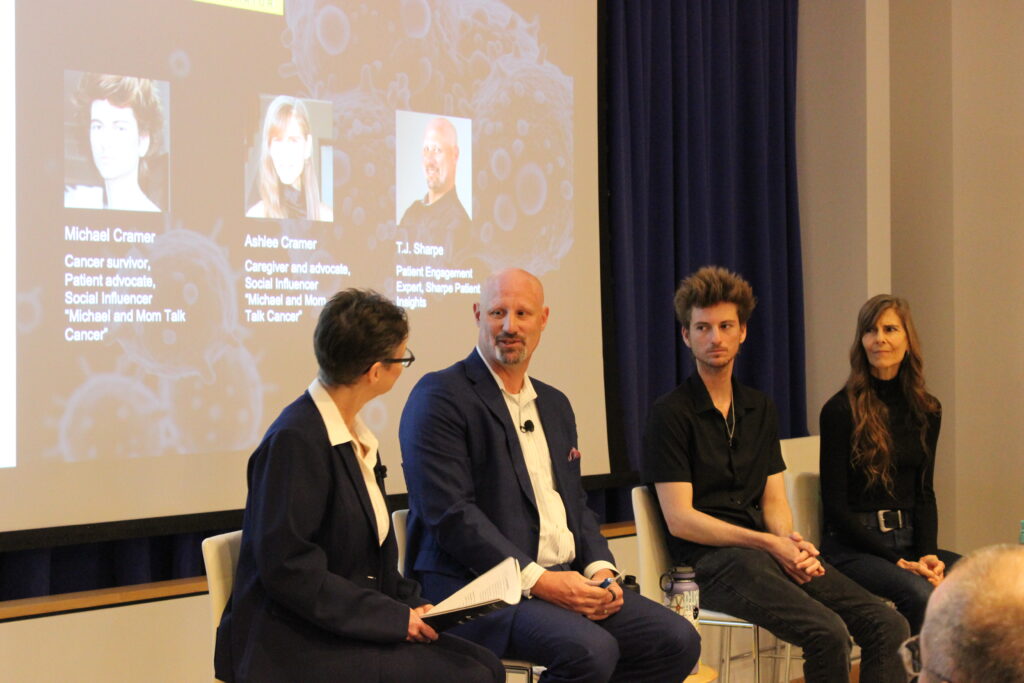
“I didn’t know I could advocate. Now I do and that has definitely changed our lives.”
Ashlee Cramer
“Feeling like I was taking a personalized medicine made me feel more hopeful. And that even though it didn’t work, at least we’re getting one step closer to the right treatment for the right person.”
T.J. Sharpe
As a patient, what is your perspective on what matters most, and what should be prioritized from the patient’s point of view when you’re thinking about cancer progress?
T.J. Sharpe: In the trial I was part of, it was a TIL therapy that also involved an immunotherapy, and they had the TIL in the middle of the immunotherapy. I asked the doctor about it and asked what he’d do, and he recommended this. When I asked how many people had done it, he replied that as far as he knew, I was the first person to try it this way. Apparently when they’d pre-treated people with an immunotherapy, they’d had better results, so they wanted to try it this way. So nobody had ever failed this treatment before, which sounded great. I became the first person to ever fail that treatment.
I think the ability to give someone the update that this is where the research is right now, and that they are at the cutting edge of some medical breakthrough – even if the treatment doesn’t end up being a miracle drug or a breakthrough for them – it gave the promise of hope. It was the promise that these are the top scientists in the melanoma world, and that this treatment is one of the things that can help cure you – and actually cure, not just give a few years.
Ashlee Cramer: Michael was diagnosed at 19 years old. I think it’s less than 1% of cancer diagnoses that are in patients 20 and under. Sometimes, people talk about the 5-year survival. What does that mean for someone diagnosed at 19? Michael’s 5-year mark is actually coming up; he is still alive, but what is his future going to look like?
When thinking about priorities, we’re always saying quality of life, which is so important. But I’m his mom, so I’m also thinking, is he gonna have kids one day? How’s his fertility going to be? How are the drugs going to affect him and his future?
He’s living with avascular necrosis, he’s having back pain, and in my mom-head, I’m thinking, is that the necrosis? Is it something else? I can’t help but think of my husband also starting with back pain as his first symptom.
So I think not just about quality of life, but also the longevity for someone like Michael. Not that I want him to live a long time in suffering; we want to think about him living a long time, surviving, but actually having a life – getting married, having kids, having friends. He’s immunosuppressed, so how immunosuppressed does one drug make him versus another? Can he come to an event like this today? These are all things I’m considering, especially as a mom.
Michael Cramer: I agree with prioritizing minimal long-term effects. I got my sperm tested, and found out I was infertile, and I’m 23. And I’m constantly at risk for secondary cancers because I had total body radiation and I had a bone marrow transplant. So when you think about it – how am I going to talk about that?
Ashlee Cramer: When Michael initially had his radiation treatment, one of the first things they said to us was about the side effects and long-term side effects of radiation. But what are you gonna do? Not do radiation before a bone marrow transplant?
Michael Cramer: You need to survive the cancer, and the issue is that the only way to survive the cancer now is chemo and radiation. If you have an aggressive cancer, like I did, like hepatitis B and T-cell lymphoma, you most likely going to have to do chemotherapy and radiation and get a bone marrow transplant. Living with chronic graft-versus-host disease is something you don’t want to live with, but if you want to survive , you have to go through the transplant and most likely get some form of graft-versus-host disease, or some long-term complication, like the complications that I live with.
So I know it’s very difficult to do this, but prioritizing just something that doesn’t have these detrimental long-term effects. I’ve heard recently that there’s been some stuff in chemotherapy that they’re giving before or after transplant that’s minimizing the potential of getting graft-versus-host disease. And now I’m thinking to myself, man, if I’m gonna be late to this, I’m gonna be so mad, because I’m gonna have to live with this disease that’s going to be less common.
It’s a struggle to know I’m gonna have to live with this. We do what we can.
- Cancer progress isn’t just about better efficacy. Many choices patients make have to do with the side effects and longer-term impact of treatments. Minimizing long term side effects is incredibly important, especially when developing paediatric therapies
- The decision-making process for cancer treatments is deeply personal and multifaceted, often influenced by the immediate and long-term quality of life considerations. Patients and caregivers benefit from a collaborative approach with healthcare providers that respects their need for comprehensive information and emotional support during critical moments
- As genomic testing and profiling become more important in treatment for different cancers, an unexpected bonus is the positive framing for patients: the potential for a “personalized” treatment can bring hope to patients as they embark on clinical trials
Stay tuned to read more from the conversation with Michael, Ashlee and T.J.
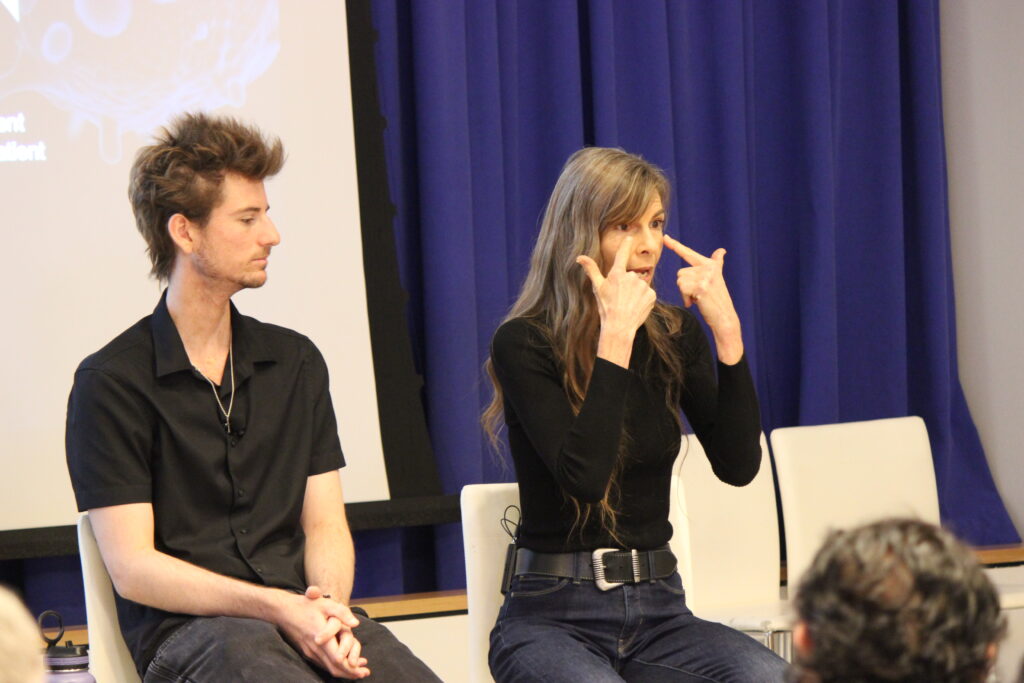
“It’s a struggle to know I’m gonna have to live with this. But we do what we can.”
Michael Cramer



